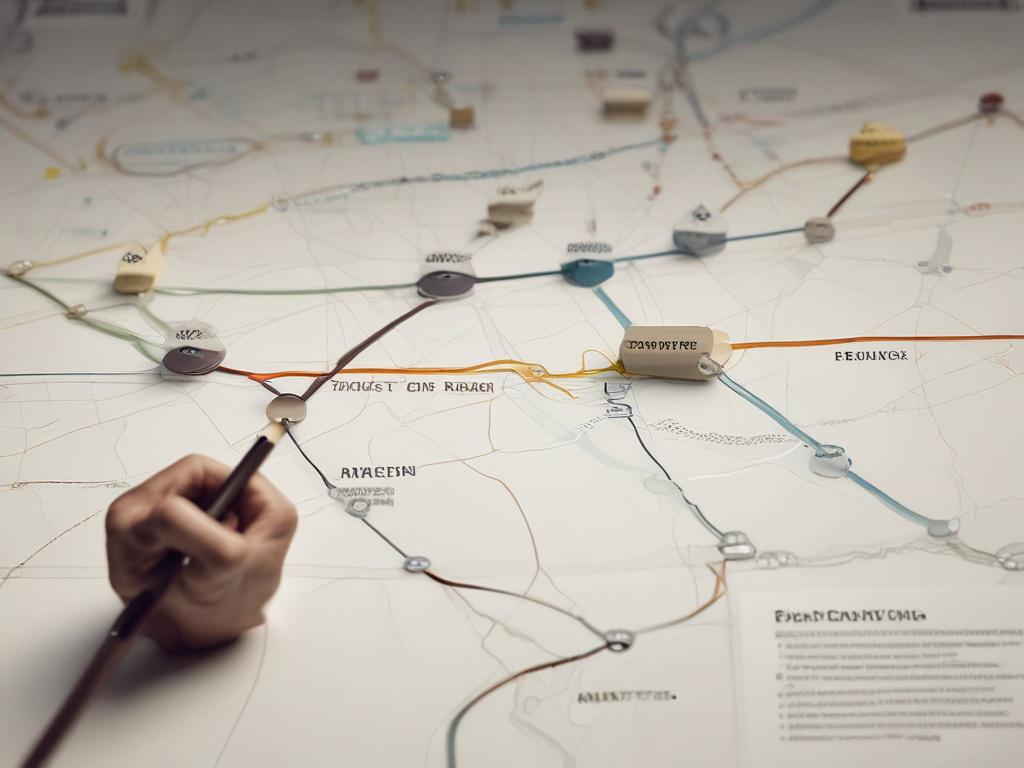Get Your Free Ad Strategy Today!
Book Your Free Call
In today's competitive marketplace, understanding your customers' needs and behaviors is essential for any business looking to thrive. That's where customer journey mapping comes in. By visualizing the path your customers take from initial awareness to final purchase and beyond, you can pinpoint key touchpoints and identify areas for improvement. This process not only enhances customer satisfaction but also drives conversion rates, helping you cultivate lasting relationships with your audience.
Throughout this blog post, we will explore the fundamentals of customer journey mapping, providing a clear step-by-step approach to create your own map. Additionally, we will delve into why this practice is crucial for your business's long-term success. Whether you're a small bakery looking to attract more local customers or a larger enterprise aiming to refine your sales strategies, understanding the customer journey can empower you to make data-driven decisions that resonate with your target market.
What is customer journey mapping? Understanding the basics
Customer journey mapping is a powerful tool that helps businesses visualize the various stages a customer goes through when interacting with their brand. It encompasses everything from the initial awareness of the product or service to the final purchase and beyond. By outlining these critical touchpoints, businesses gain valuable insights into how customers experience their brand, allowing them to identify opportunities for improvement. Imagine each interaction a customer has with your brand like a puzzle piece; when you piece them together, you create a complete picture of their journey.
At its core, customer journey mapping is about understanding the emotional and behavioral state of your customers at each stage. This approach helps businesses to empathize with their customers' needs, challenges, and questions. By recognizing what motivates a customer to move from one stage to another, companies can tailor their marketing strategies and enhance overall customer satisfaction. Understanding these nuances is essential for creating effective marketing campaigns that resonate with your target audience.
Mapping the customer journey: A step-by-step approach
Mapping the customer journey involves several key steps to ensure a comprehensive understanding of the customer's experience. Start by identifying the different stages of the customer journey, which typically include awareness, consideration, decision, and retention. Each stage represents a different phase in how customers interact with your business. Next, gather data through customer surveys, interviews, and analytics to gain insights into what customers are thinking and feeling at each stage. This information is crucial for creating a detailed customer journey map that reflects real experiences instead of assumptions.
Once you have collected data, visualize the journey by creating a map that outlines each touchpoint—such as social media interactions, website visits, or in-store experiences. Highlight the customer's emotions, thoughts, and pain points at each stage to gain a clearer picture of their overall experience. Additionally, involve your team in reviewing the map to identify opportunities for improvement. By understanding and visualizing the customer journey, you empower your business to make informed decisions that enhance customer satisfaction and drive brand loyalty.
Why customer journey mapping is essential for your business success
Customer journey mapping plays a crucial role in enhancing customer experience and boosts overall business success. By understanding the various touchpoints a customer encounters, businesses can identify areas for improvement. This proactive approach enables companies to address concerns before they become roadblocks, ensuring smoother interactions. For example, if customers frequently abandon their shopping carts, mapping can uncover potential issues, such as complicated checkout processes or unexpected shipping costs. By optimizing these areas, businesses can significantly reduce churn rates and increase conversion levels, ultimately driving revenue growth.
In addition, customer journey mapping fosters a deeper connection with the audience. When businesses visualize the path their customers take, they can tailor their marketing strategies, promotions, and content to resonate better. This alignment enhances customer satisfaction, as clients feel their needs are recognized and valued. Moreover, satisfied customers are more likely to share their positive experiences and recommend the business to others, creating a ripple effect that can lead to increased brand loyalty and an expanding customer base. Embracing customer journey mapping is not just a strategy; it's an essential investment in creating lasting relationships with your customers.